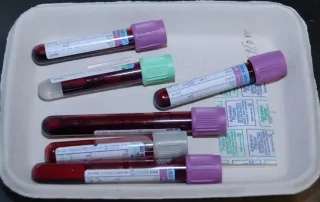An urgent argument for the HPV vaccine
Source: NPR Chris Riley's symptoms started in the summer of 2021. At first, he didn't think much about them. His throat felt a little sore, and he noticed hardening of his lymph nodes. At 57 years old, Riley was active and healthy. He biked everywhere and didn't even own a car. Riley, it turned out, had oropharyngeal cancer, which develops in the tonsils or throat. In Riley's case, it had originated in his left tonsil, but by the time it was discovered — after visits to a dentist, a general practitioner, and an ear, nose and throat specialist — it had spread to his lymph nodes. The cause, according to his doctors, was human papillomavirus, or HPV. HPV is a virus that can live and replicate in certain cells on the surface of the skin and mucous membranes, including the inner lining of the mouth, throat and genitals. While over 200 types of the virus exist, only a few can lead to cancer, usually many years or decades after exposure. Nearly everyone who isn't vaccinated against HPV will be infected at some point, though 9 out of 10 infections resolve within two years. Passed from person to person through skin-to-skin contact, usually during sexual activity, HPV is best known for causing cervical cancer, which kills about 4,000 people in the United States every year. But the virus can also lead to warts and other malignancies, including cancer of the throat, anus and genitalia — it's linked to six types of cancers in total. [...]


